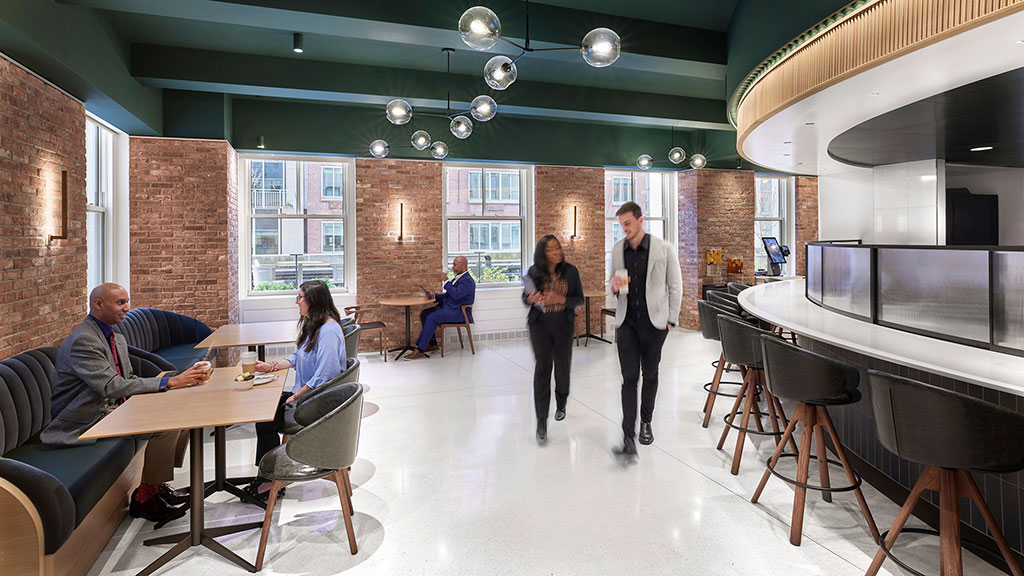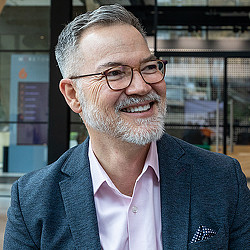Rethinking Law Firm Workplaces in the Age of Hybrid Work
November 30, 2023 | By Carlos Posada
Editor’s note: This article originally appeared on Law.com.
Although the debate on what the right balance and approach are continues, it is fair to say that hybrid working is here to stay. Embracing this transition in law firms has required a lot of thought, given the nature of their highly confidential and focused work. We also know how crucial mentorship and firm culture are to the business and ecosystem of today’s law firms, so creating places that people want to work in is more important than ever. As we increasingly look at design and the built environment through the lens of sustainability and social consciousness, it seems competing interests are emerging that are creating tensions in the design of law firm workplaces.
One of the universal issues we face is the climate crisis. As we collectively consider how to reduce our carbon footprints, the decision to rethink the purpose, and therefore layout, of our offices has become urgent. It is important we explore the challenges and opportunities law firms face in finding the right balance between their sustainability goals, employee well-being, and business opportunities where employees can thrive and do their best work.
Currently, data is showing that European office occupancy is averaging 50% with midweek peaks of 65%. The feedback we have received from lawyers is that they often feel isolated in their assigned offices and question the benefit of commuting in when there is a lack of buzz, energy, and even interaction with their colleagues.
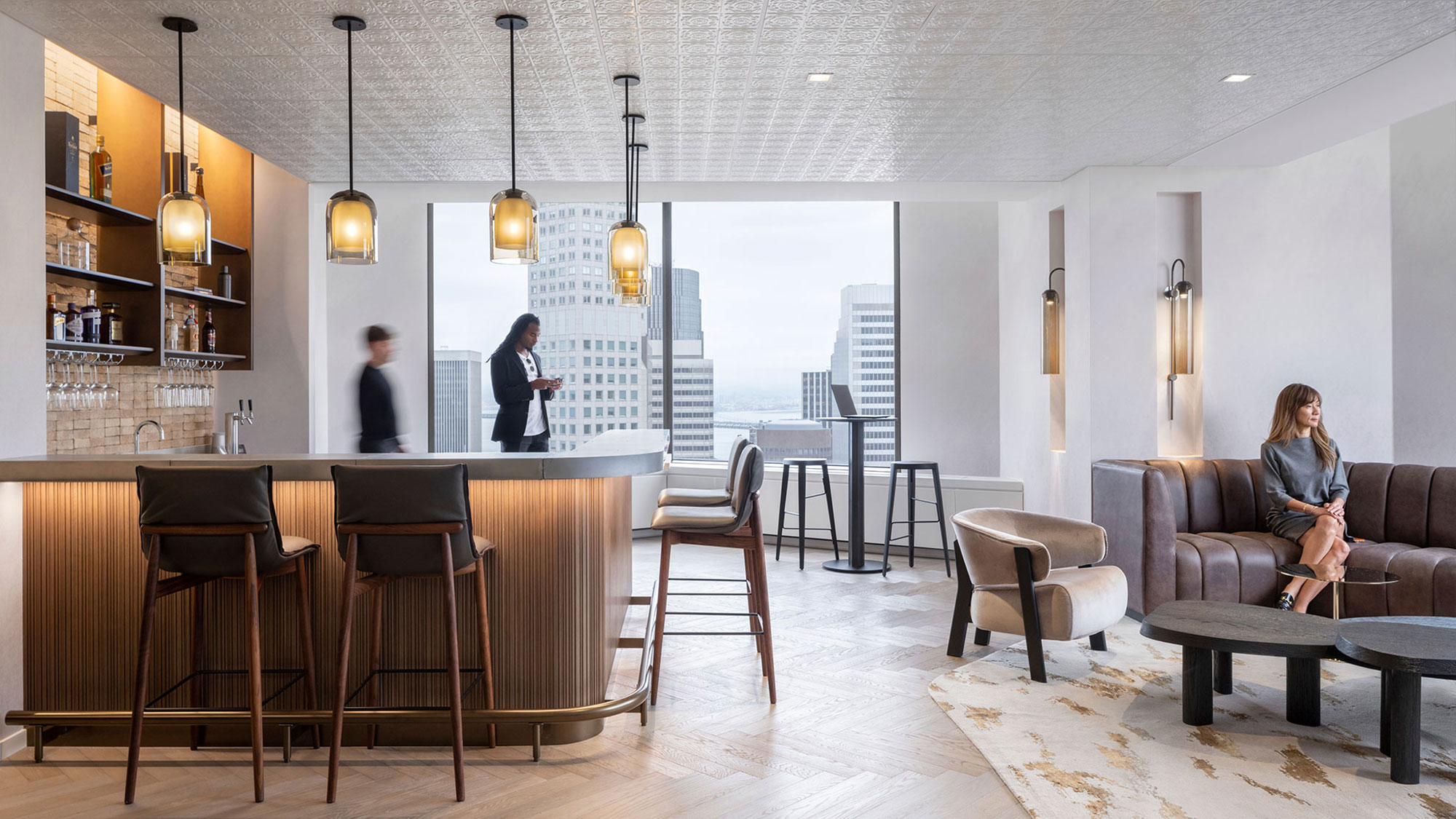
Better Culture, Better Mentoring, and Better Business
Typically, law firm offices have been designed with assigned seating, which makes less sense in a hybrid working model. The key questions we should be asking are: Can low occupancy justify assigned seating? Would a higher critical mass contribute to better culture, better mentoring, and better business opportunities? Could the benefits of unassigned seating outweigh the challenges? How can we do this whilst accounting for privacy, neurodiversity, and differing individual needs? These questions are being grappled with by most law firms that are currently in the process of negotiating real estate deals and embarking on the design of their new office.
As these firms consider carbon footprint reduction and hope for a more populated and collaborative environment, key design elements need to be incorporated for success. It is important to remember that non-occupied offices are both unsustainable and undesirable, and whilst we are all embracing hybrid work, no one should leave the office at the end of the day thinking they could have just worked from home. Bringing the office ‘buzz’ back and enhancing employee experience is crucial to making everyone feel that their commute is worthwhile.
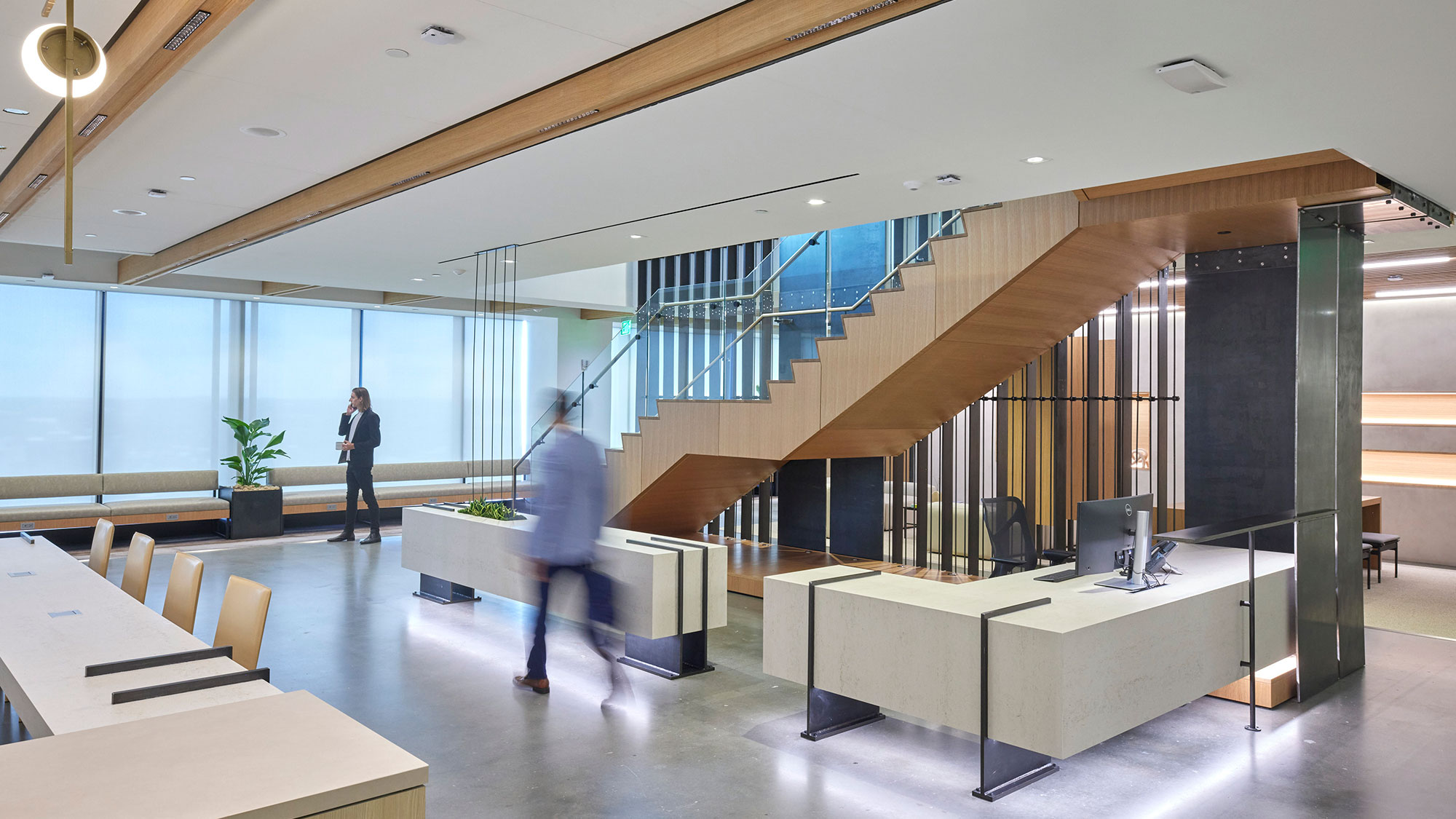
New strategies that provide unassigned work points whilst increasing informal collaboration zones and alternative support spaces will not only make workplaces feel busier, but will also create more opportunities for cross-practice idea pollination, mentorship, and experiencing company culture. This enhanced atmosphere will entice more people back into the office, which will mean less underutilized space overall. Adopting an unassigned seating model, reducing desk space, and increasing agile work points means careful consideration and thoughtful expertise needs to be provided whilst designing for neurodiversity and establishing work etiquette policies.
Our global workplace survey revealed that providing an ideal mix of experiences in the workplace is key to attracting people back into the office, with 45% of respondents claiming that they would come in one more day a week if provided with a diverse range of spaces. This was particularly true for younger generations, making it key for attracting and retaining new talent.
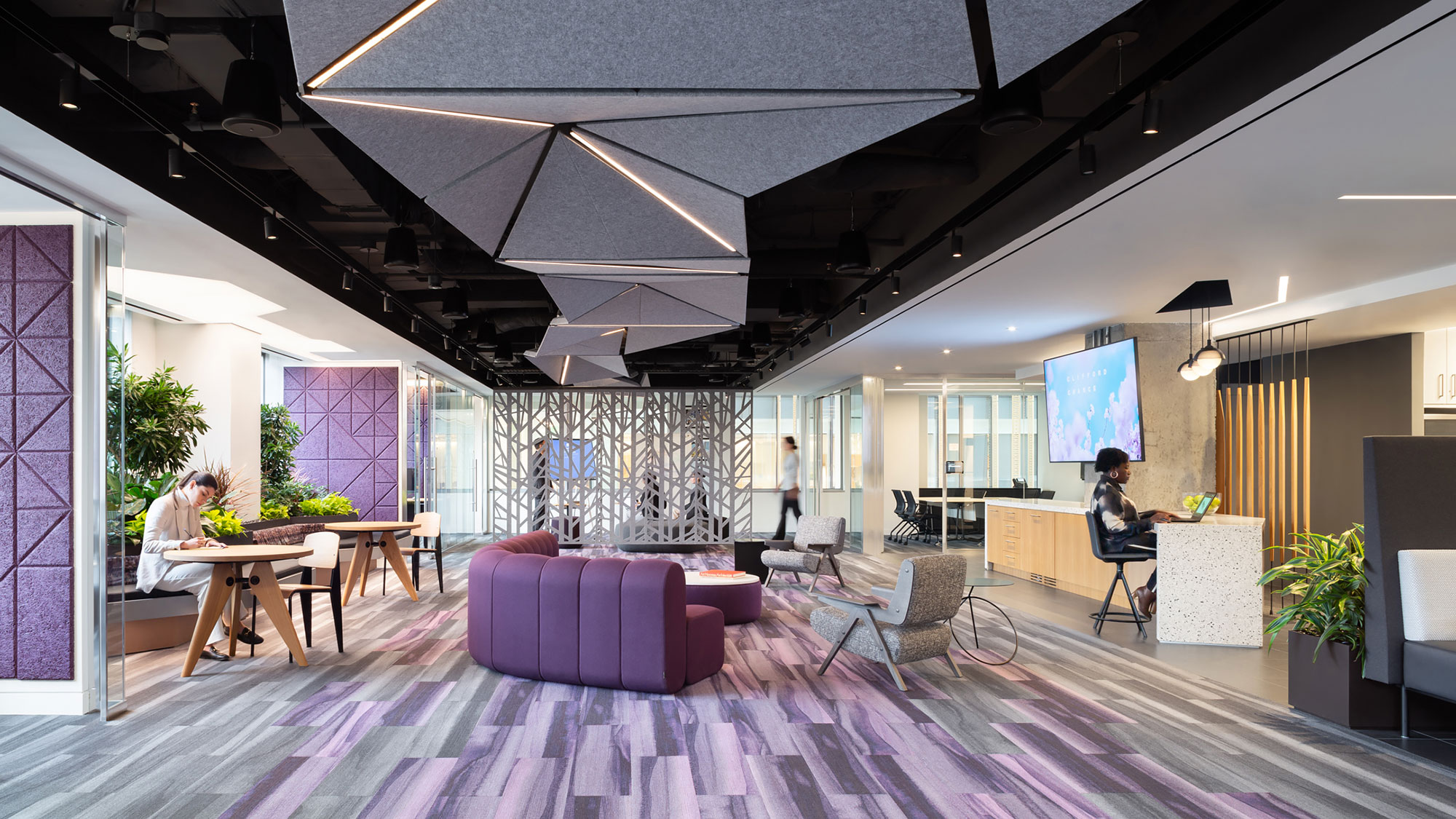
Designing a Law Firm of the Future
We worked with one of our recent law firm clients to transform their workplace with an intentional focus on wellness and equity of space. Moving away from the ‘traditional’ professional services design, the adaptability of this office offers a high level of choice between settings depending on individual needs and the task at hand. To encourage an open and collaborative environment, our design increased shared spaces for employees to work and connect by 13%, with 31% shared space in total. The design expanded the canteen and café area to act as the heart of the office with daily breakfast, lunch, and dinner options. This transformation has led to more relevant mentoring, higher occupancy, and a mixture of staff and lawyers who feel more connected to the culture and business.
The office of the future will be a place where lawyers will learn to work differently. Concerns around confidentiality, ability to focus, and personal storage will be addressed by innovative design and technology. This new environment and approach will allow lawyers to benefit from the breakdown of silos and meaningful career development, which, during lockdown, created a culture of isolation.
For media inquiries, email .
